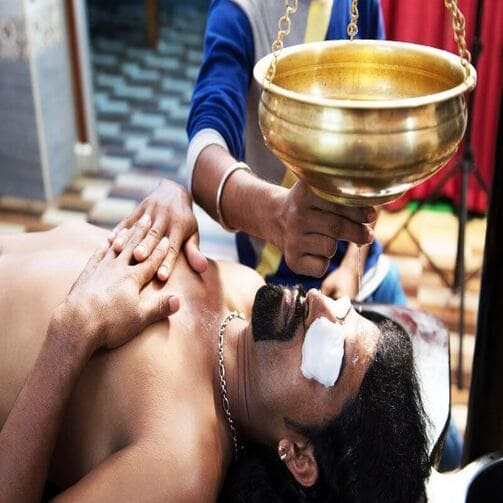

The word Ayurveda is a combination of two words: ‘ayu’ which means long life and health and ‘Veda’ meaning knowledge. Therefore, Ayurveda is the ancient science which educates on creating a long and healthy life. Ayurveda place a great emphasis on prevention and encourages the maintenance of health through close attention to balance one’s life. Expert Ayurveda physicians of Veda Wellness Centre, Kanaka Nisarga Mane have successfully healed many challenging cases through Panchakarma and detox methods.

Snehapana – Snehapana is the oral intake of medicated or non – medicated sneha in required quantities. This treatment improves the digestive power and also cleans the whole body. Snehapana is also beneficial for skin as it makes the skin soft and supple. Snehapana improves longevity and prevents aging.
Abhyanga – Abhyanga commonly called oil massage is a form of ayurvedic medicine that involves massage of the whole body with warm oil. This oil is also pre – mixed with herbs for specific conditions. It is good for joints, tissues of the body and also improves the condition of dry, coarse hair and flaky skin.
Swedana – Swedana is the process of inducing sweat with the help of steam, generated from medicated herbal decoctions. It helps to eliminate toxins from the body through tiny pores of the skin along with sweat. It also improves blood circulation, reduces inflammation, rejuvenates the skin, improves digestion and also improves mobility.
Shirodhara– Shiro means head, dhara means pouring in stream. Medicated oil is poured over the forehead continuously for 30 minutes because this area has large number of nerve endings and highly sensitive. Vibrations are created on the forehead by the pressure of oil stream. This procedure improves blood circulation to the brain by vasodilating all the channels. It also helps in reducing the stress hormone. The entire procedure gives relief to the body, mind and nervous steam.
Baashpa sweda – In this therapy, the entire body is given a medicated steam bath by making the patient to be in steam chamber until there is a sweat. This procedure is helpful in detoxifying the body and reducing the weight. It also loosens the joints and induces feeling of lightness
Ishtika sweda – Coming Soon…